Mushrooms have long fascinated humanity, not only for their diverse shapes and sizes but also for their culinary and medicinal properties. Among the various types of trees that serve as hosts to mushrooms, poplar trees stand out for their association with a unique range of fungi.
Today we will disucss mushrooms that grow on poplar trees, highlighting both the edible delicacies and the non-edible varieties that adorn these majestic trees.
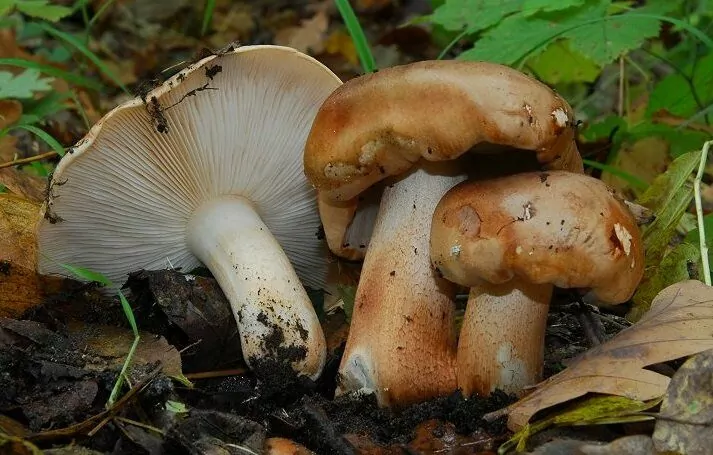
Mushrooms that grow on Poplar trees
Table of Contents
Edible mushrooms that grow on poplar trees
A wide variety of Edible mushrooms that grow on poplar trees. But the most delicious edible mushrooms on trees of them are poplar rowing, boletus gray mushrooms, milk mushrooms, blue and poplar.
poplar row mushroom
The Poplar Row Mushroom entices foragers with its distinctive features and seasonal appearance:
- Appearance: Initially hemispherical, later straightening with a diameter of 6-12 cm, and a slightly bending cap. The leg is fleshy, dense, medium-sized, and cylindrical, supporting a soft, white, floury-flavored pulp.
- Season: Found from August to October, growing in large families.
Foragers delight in the culinary potential and abundance of the Poplar Row Mushroom during its seasonal bloom.
Names and pictures of Mushrooms That Grow Under Spruce Trees.
gray boletus poplar mushrooms
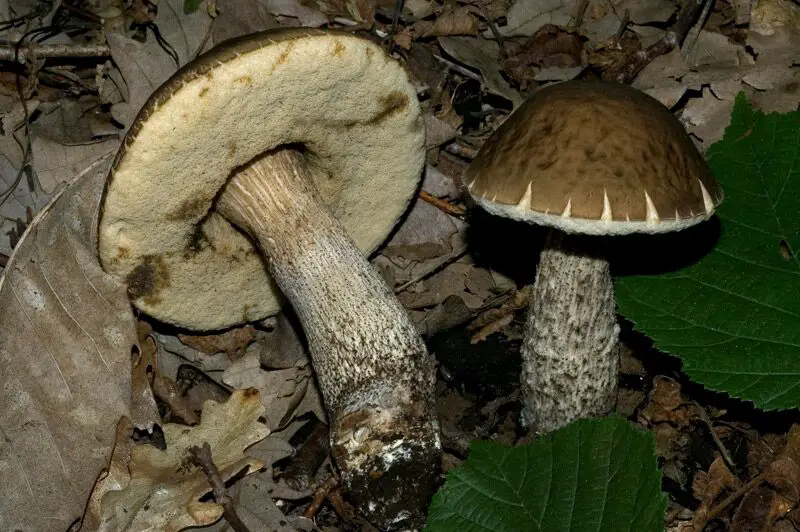
Gray boletus poplar mushrooms offer a captivating culinary experience with their distinctive features:
- Appearance: Caps reaching up to 14 cm, transitioning from hemispherical to pillow-shaped, with tucked-up edges and an uneven, velvety surface in olive-brown or brownish-gray hues.
- Texture: Soft pulp turns fibrous and white on the stem, revealing a pinkish-purple hue when cut.
- Legs: Cylindrical with a club-shaped, thickened base, measuring 5-13 cm in height and less than 4 cm in thickness.
- Season: Fruiting from June to October.
These mushrooms, though edible, require heat treatment before consumption. Their unique characteristics make them a sought-after find for mushroom enthusiasts.
lactarius repraesentaneus
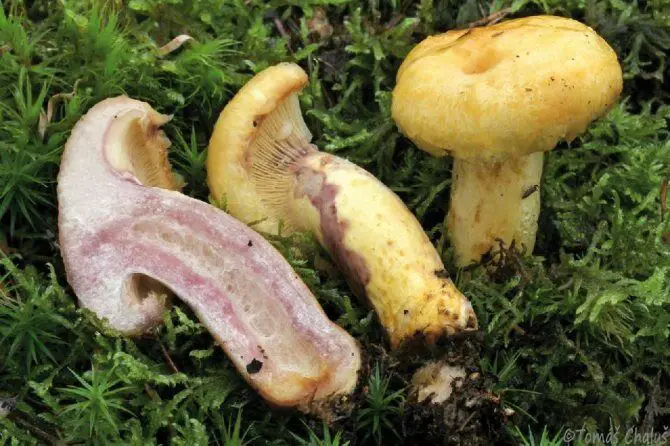
Lactarius repraesentaneus, commonly known as the northern bearded milkcap, presents a unique foraging opportunity with its distinct characteristics:
- Habitat: Primarily found under pines and birches, occasionally in poplar areas.
- Cap: Yellowish, velvety, and shaggy along the edges.
- Pulp: Dense, white, bitter-tasting, secreting milky juice that turns purple upon exposure to oxygen.
- Leg: Thick (about 3 cm), initially solid but hollowing as the mushroom matures, turning blue when pressed.
- Season: Harvested from late July to August.
In culinary endeavors, the blue discoloration is utilized specifically for salting purposes. Foragers delight in the distinct flavors and unique attributes of the milk mushroom.
Lactarius controversus or poplar milkcap
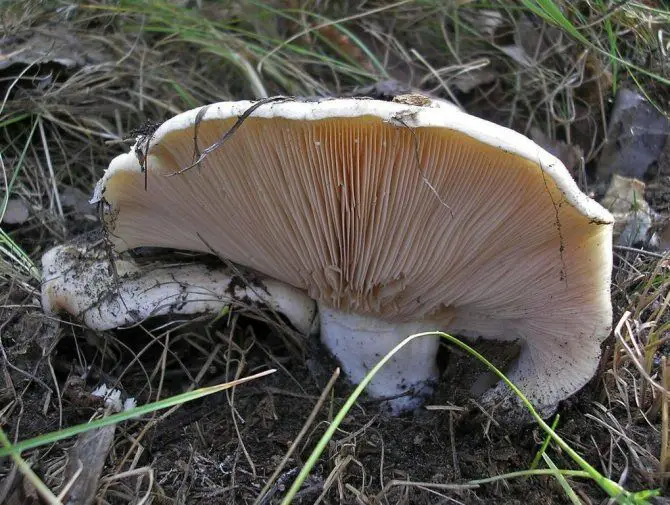
Lactarius controversus, known as the poplar milkcap, showcases distinctive characteristics that set it apart:
- Cap: Initially 6 cm in diameter, expanding to a substantial 30 cm in maturity, with whitish, dense, and brittle flesh emitting afruity aroma but possessing a sharp taste.
- Juice: Produces milky white juice with a bitter taste that remains unchanged upon exposure to air.
- Stem: Typically 3-8 cm tall, strong and dense, often narrowing at the base, and occasionally showing eccentric localization.
- Season: Fruiting from July to October in small groups.
While its bitter taste may deter some, foragers prize Lactarius controversus for its unique attributes and culinary potential.
what mushrooms grow on poplar trees in autumn
Autumn is a favorite season for the growth of many mushrooms. You can find many species suitable for salting, pickling, preservation, and freezing during this period.
poplar Fieldcap mushrooms
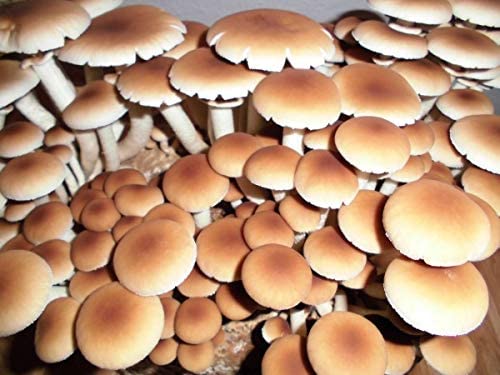
Poplar Fieldcap mushrooms offer both visual appeal and culinary delight:
- Appearance: Dark brown spherical cap with a velvety surface, lightening as it ripens.
- Taste: Not only edible but possessing an incredible flavor.
- Variability: External features may vary based on climatic conditions.
These mushrooms, with their unique characteristics, are a treasure for foragers and food enthusiasts alike.
oyster mushrooms on poplar trees
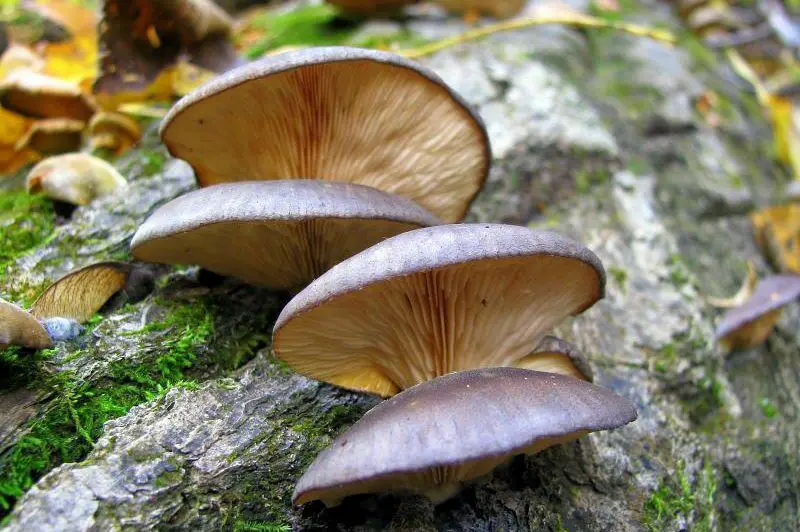
Oyster mushrooms flourishing on poplar trees offer a delectable treat with their unique attributes:
- Cap: Lobed, dense, and fleshy, often slightly mucilaginous and pubescent, occasionally turning shiny in humid conditions, displaying dark hues with variations like green-brown or gray-brown, and sporadically adorned with light yellowish-green or gray-purple spots.
- Stem: Short, cylindrical, laterally positioned, and noticeably curved, typically not exceeding 2-3 cm in length and occasionally absent.
- Pulp: Dense and fleshy, turning watery in wet conditions, with a yellowish or light shade, becoming ductile with age, and lackinga pronounced smell.
- Season: Found in autumn between September and December in poplar or deciduous forests, ceasing growth with persistent frosts.
Foragers relish the culinary possibilities and seasonal charm of oyster mushrooms on poplar trees.
Read out Mushrooms that Grow in Fall.
Polypores Mushroom
Autumn in poplar forests unveils the fascinating world of polypores mushrooms, including two notable varieties:
1. Variegated Tinder Fungus (Scaly)
- Appearance: Large fruit body, kidney-shaped initially, later becoming prostrate, with a circumference of 10-40 cm. Caps adorned with symmetrical circles of scales, thin and fan-shaped edges.
- Pulp: Dense, juicy, with a pleasant aroma, especially pronounced in young specimens.
- Leg: Thick, lateral, sometimes eccentric, featuring a mesh pattern akin to the cap.
- Grouping: Forms groups rather than growing alone.
2. Sulfur Yellow Tinder Fungus
- Development: Begins as a yellowish drop-shaped mass, gradually hardening and changing color from pale yellow to orange and then pinkish-orange.
- Size: Fruit body can grow up to 30 cm.
- Pulp: Initially elastic and juicy, becoming hard, dry, woody, and almost white in mature specimens.
These polypores mushrooms thrive on weakened poplar trees, offering a captivating display from May to the end of autumn.
non-edible mushrooms that grow on poplar trees
Poplar forests hide not only useful but also non edible mushroom fruits. They may not be poisonous, but harvesting them for further consumption is still not recommended.
Poplar Flake mushroom
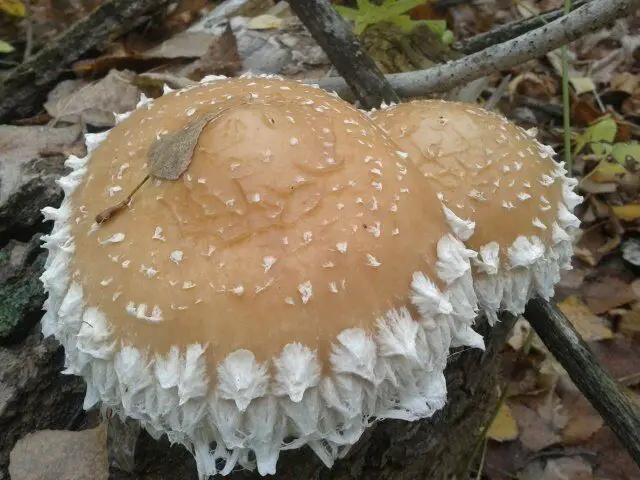
The Poplar Flake mushroom, a captivating find in late summer and early autumn, boasts distinctive features:
- Cap: Ranging from 5 to 20 cm in diameter, initially yellowish-white or light brown, adorned with scales that vanish upon full ripening.
- Leg: Growing 5-15 cm tall and 2-3 cm wide, often central but occasionally eccentric, with a less dense structure, tapering upwards, and swollen at the base, featuring scales that disappear over time.
- Habitat: Thriving in groups on poplar and other hardwoods, particularly favoring stumps or weakened trees.
Foragers delight in discovering Poplar Flake mushrooms from the second half of August to the end of September, relishing their unique appearance and seasonal availability.
Hypholoma sublateritium or brick cap
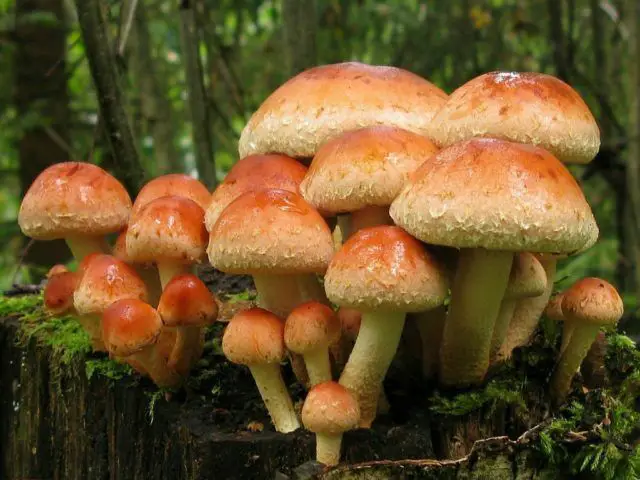
Hypholoma sublateritium, known for its brick red hue, presents both allure and caution:
- Color: Brick red, distinguishing it from edible varieties.
- Appearance: Initially spherical, later opening with a diameter of 4-10 cm, with a thick, dense, fleshy structure. Color ranges from red-brown to yellow-brown, darker at the center.
- Pulp: Dense, emitting an unpleasant odor when broken, with a bitter taste, making it inadvisable for consumption due to the risk of poisoning.
- Leg: Long, up to 10 cm, initially straight and solid, later hollow and curved, featuring a characteristic ring.
Hypholoma sublateritium emerges in August, ceasing its fruiting with the arrival of the first snow, resembling edible varieties but requiring caution due to its toxicity.
Inexperienced mushroom pickers may confuse this species with autumn mushrooms, since they are not only outwardly similar but also bear fruit in almost the same period of time. In addition, they grow in close proximity to each other.
Hebeloma crustuliniforme or poison pie
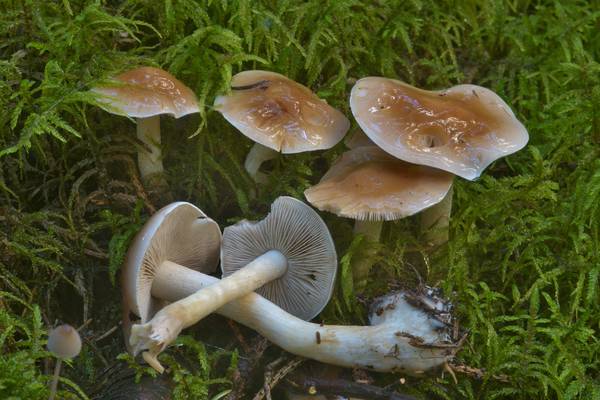
Hebeloma crustuliniforme, commonly known as the horseradish mushroom, offers a unique sensory experience:
- Name: Named for its distinctive smell reminiscent of horseradish or raw potatoes.
- Appearance: Initially hemispherical, later acquiring a rounded-conical shape, eventually flattening with a diameter of 4-9 cm.
- Pulp: Soft, white, with an odor resembling radish or raw potatoes and a bitter taste.
- Leg: Thin, cylindrical, occasionally thickening at the base, with cavities forming in mature specimens, colored white and brown, often coated with easily removable plaque.
- Color Variation: Cap color can range from off-white to hazel or brick red throughout its lifespan.
Hebeloma crustuliniforme thrives in areas populated by poplars, oaks, aspens, and birches, making appearances from August to November.
Conclusion
Exploring mushrooms that grow on poplar trees offers a fascinating journey into the world of mycology. While edible varieties tantalize the taste buds and inspire culinary creativity, non-edible species serve as reminders of nature’s complexity and the importance of cautious foraging. Whether you’re a seasoned mycophile or a curious beginner, understanding the diverse mushrooms that grace poplar trees enriches your connection to the natural world.
